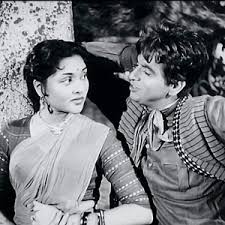The Emergence of Indian Noir
Indian film, known worldwide for its bright colours, great dance numbers, and colourful melodrama, has also made a place for itself in the realm of noir the genre of film that is about dark, moody visuals and the shadows of human souls. Such a claptioned Indian noir absorbs the western noir elements in accordance with the deep rooted colourful backdrop and traditions of India to experience the uniqueness of an Indian Noir that mirrors Indias social political subtleties. (Bollywood’s Noir Odyssey: Has The Industry Mastered The Perfect Dark Art? – filmaro)
Defining Stylized Indian Noir
Stylized Indian noir is a subgenre of noir that combines archetypal characteristics of film noir (chiaroscuro lighting, morally ambiguous characters, and complex narratives) with Indian cultural details and storytelling methods. The combination creates visually vibrant and thematically potent films that can be as much about the urban as the existential.
Historical Roots: The Genesis of Indian Noir
Baazi (1951): The Inception
Directed by Guru Dutt, “Baazi” is often credited as one of the earliest examples of Indian noir. The film introduced audiences to a morally complex protagonist and a narrative steeped in crime and deception, setting the stage for future noir productions in India. (Baazi (1951 film))
Andha Naal (1954): A Tamil Noir Pioneer
“Andha Naal,” directed by S. Balachander, is notable for being Tamil cinema’s first film noir. The film’s non-linear narrative and absence of songs marked a significant departure from traditional Indian filmmaking, emphasizing mood and psychological depth. (Andha Naal)
Visual Aesthetics: Crafting the Noir Look
Stylized Indian noir is distinguished by its meticulous visual composition:
- Lighting: Use of high-contrast lighting to create dramatic shadows and highlight emotional tension. (Bollywood’s Noir Odyssey: Has The Industry Mastered The Perfect Dark Art? – filmaro)
- Color Palette: Predominantly monochromatic or muted tones to evoke a sense of melancholy and suspense.
- Set Design: Urban landscapes, often depicting the underbelly of cities, serve as a backdrop to the narrative, enhancing the themes of isolation and moral decay.
Narrative Themes: Exploring the Human Psyche
Indian noir delves into themes that resonate with the complexities of human nature and society:
- Moral Ambiguity: Characters often grapple with ethical dilemmas, blurring the lines between right and wrong.
- Urban Alienation: The cityscape is portrayed as a labyrinthine space where individuals confront their inner demons.
- Femme Fatale: Women characters are depicted with depth, often challenging traditional gender roles and embodying both vulnerability and strength. (The urban male protagonist in Indian film noir: A reading of Bees Saal Baad, Woh Kaun Thi? and Kuheli)
Modern Interpretations: Neo-Noir in Contemporary Indian Cinema
Satya (1998): The Rise of Mumbai Noir
Ram Gopal Varma’s “Satya” is a seminal work that brought the gritty realism of Mumbai’s underworld to the forefront. The film’s raw portrayal of crime and its psychological impact on individuals marked a new era in Indian filmmaking. (Satya (1998 film))
Johnny Gaddaar (2007): A Stylish Homage
Directed by Sriram Raghavan, “Johnny Gaddaar” pays tribute to classic noir through its intricate plot and stylized visuals, blending suspense with a modern sensibility. (Bollywood’s Noir Odyssey: Has The Industry Mastered The Perfect Dark Art? – filmaro)
Monica, O My Darling (2022): Embracing Paranoia
This film exemplifies the neo-noir genre’s evolution, incorporating elements of paranoia and dark humor to explore themes of ambition and deceit in a corporate setting.
Cultural Significance: Reflecting Society Through Noir
Stylized Indian noir serves as a mirror to society, reflecting the complexities of urban life, the pervasiveness of corruption, and the individual’s struggle within a morally ambiguous world. By integrating traditional Indian elements with noir aesthetics, these films offer a unique perspective on contemporary issues.
The Enduring Appeal of Indian Noir
The Indian noir aesthetic continues to fascinate, with its powerful storytelling and artistic beauty. As directors tinker with form and substance, the genre progresses, with new perspectives on the human condition are filtered through cinematic interpretations of our communities. Its mixing of various noir traditions with Indian cultural particulars is what give the film both its longevity and enduring appeal.
Frequently Asked Questions (FAQ)
Q1: What defines stylized Indian noir?
Stylized Indian noir combines traditional film noir elements such as shadowy visuals and complex characters with Indian cultural themes and storytelling methods, resulting in a unique cinematic experience.
Q2: How does Indian noir differ from Western noir?
While both share core noir characteristics, Indian noir often incorporates musical elements, cultural motifs, and addresses socio-political issues specific to the Indian context.
Q3: Can you name some notable Indian noir films?
Yes, notable examples include “Baazi” (1951), “Andha Naal” (1954), “Satya” (1998), “Johnny Gaddaar” (2007), and “Monica, O My Darling” (2022). (Monica, O My Darling: Is India finally waking up to the neo-noir genre of films? – Firstpost)
Q4: What themes are commonly explored in Indian noir?
Common themes include moral ambiguity, urban alienation, corruption, and the psychological complexities of individuals navigating challenging societal landscapes.
Q5: Is stylized Indian noir still relevant today?
Absolutely. Contemporary filmmakers continue to explore and innovate within the genre, addressing modern issues while maintaining the stylistic and thematic essence of noir.